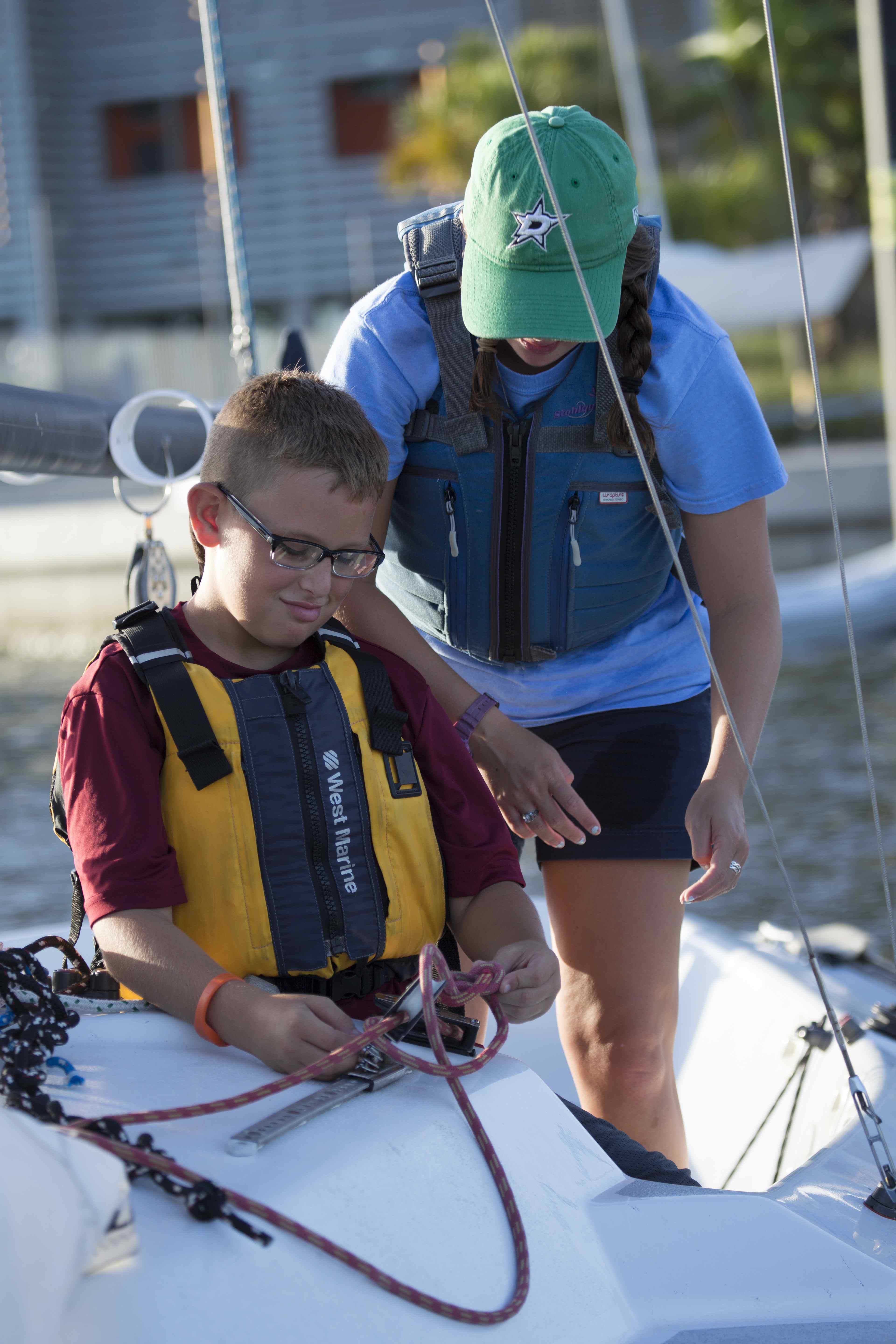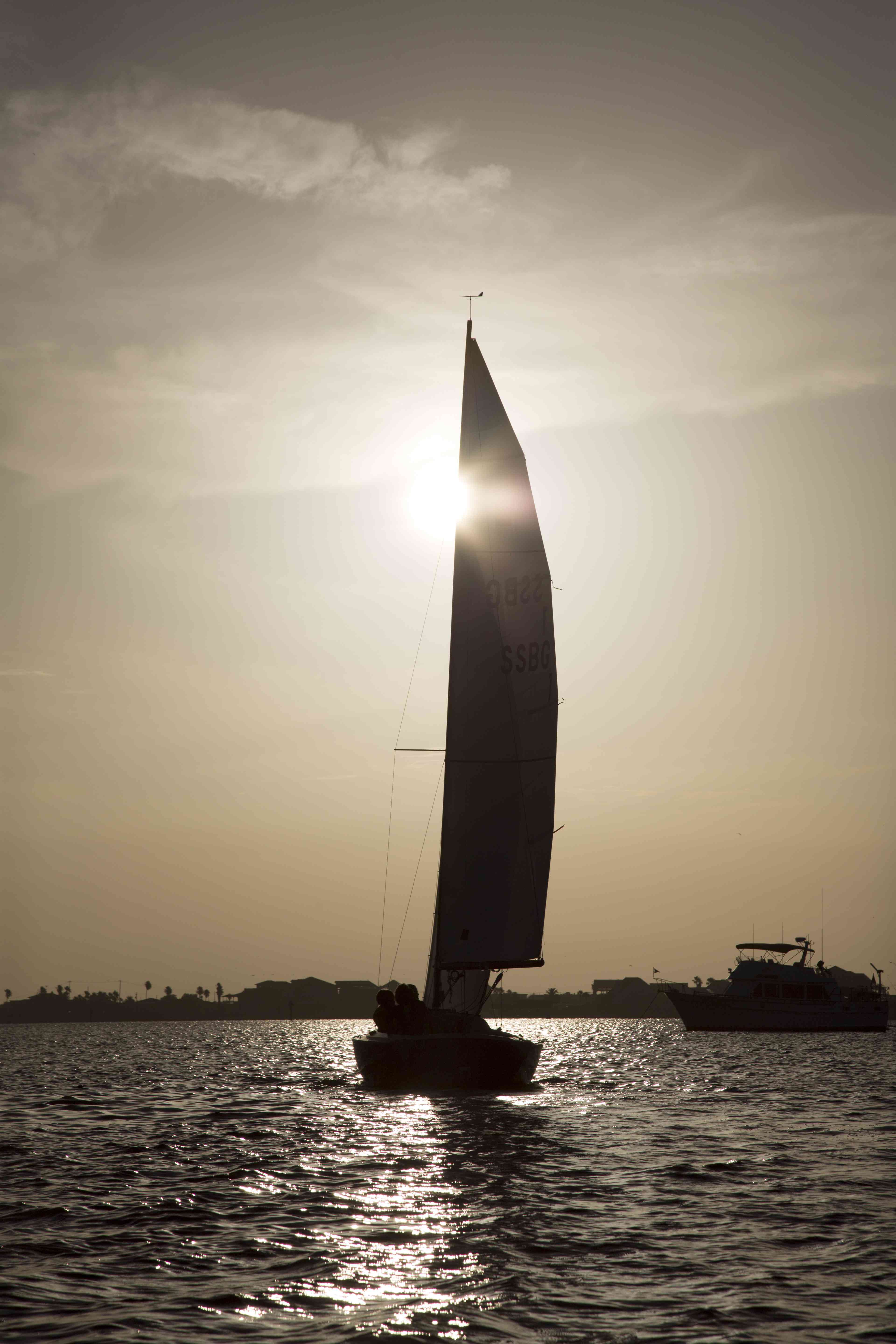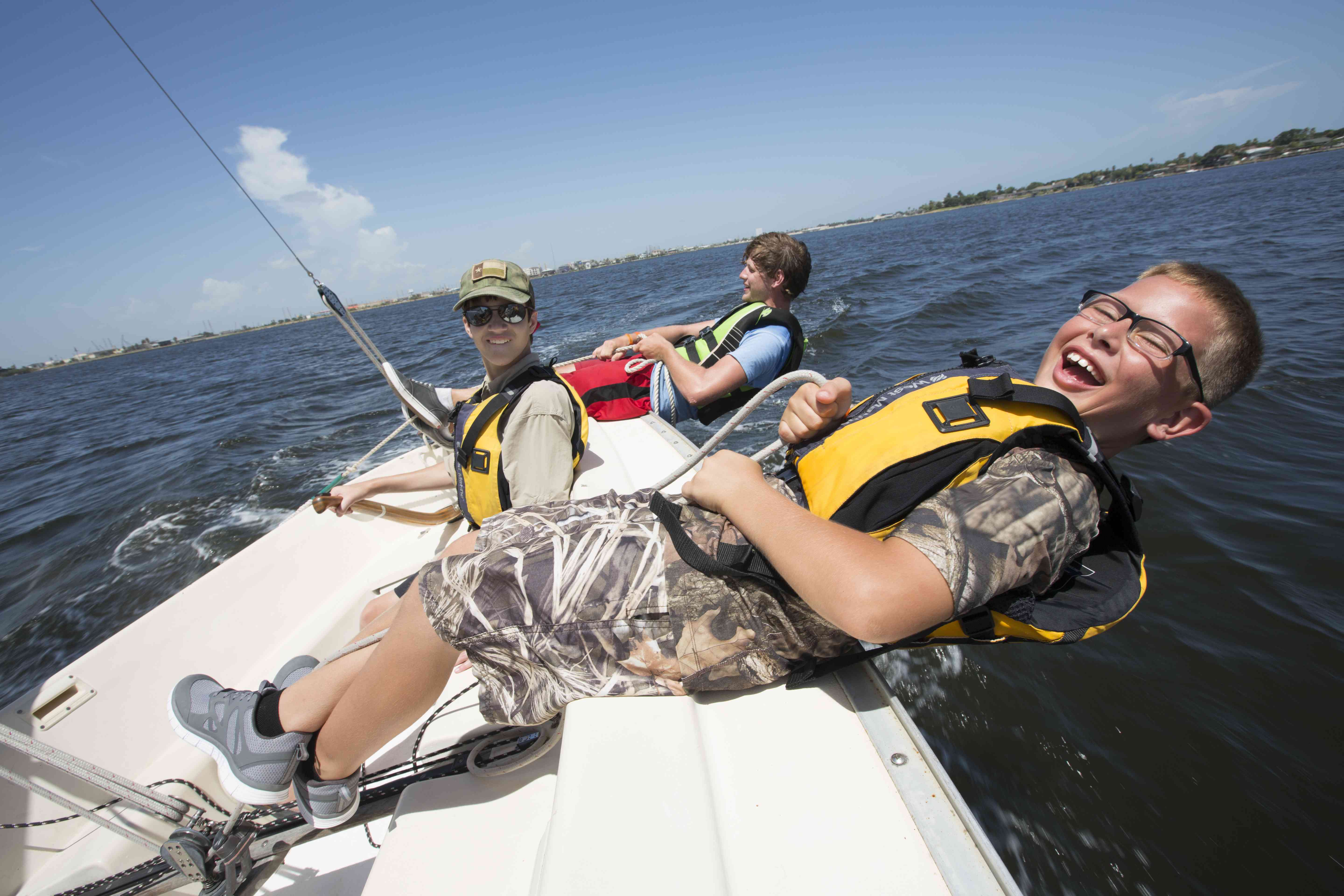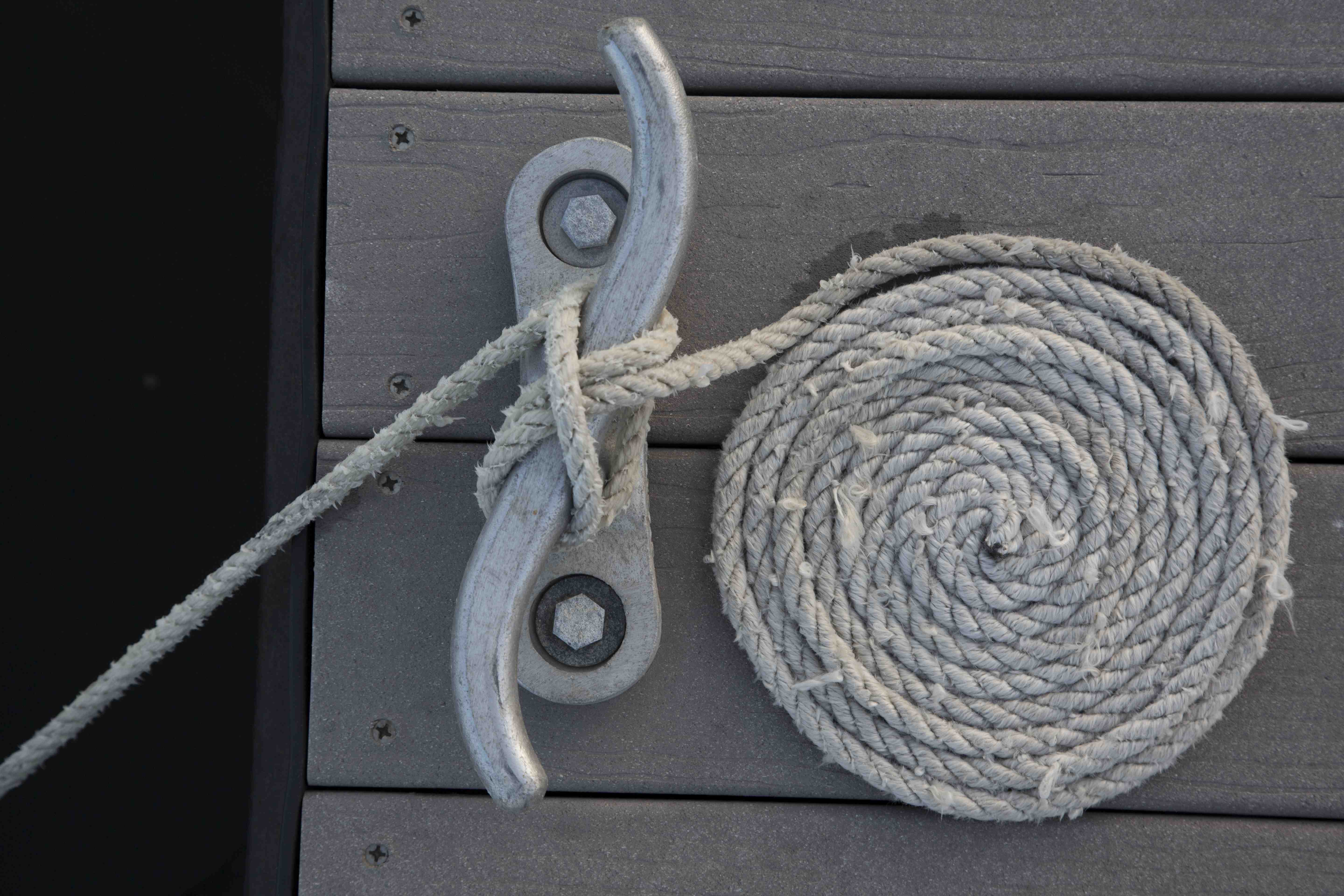Learn the Ropes at Sea Scout Base Galveston
By Aaron Derr
Photographs by W. Garth Dowling
Sailing is tricky.
For first-timers, there’s lots of stuff to learn.
Even the language — words such as bow, starboard and port — is confusing at first.
But once you get the hang of it, there are few things cooler than cruising across the water, powered only by the wind blowing against your sails.

By the time you complete the Privateer Adventure program at Sea Scout Base Galveston, you won’t be an expert on sailing. But you will have gained enough knowledge and experience to get past those first-time jitters.
Scouts who make the trip to the town on the Gulf Coast of Texas get to operate sailboats small and large. They might be shaky at first. And it’s likely they’ll end up in the water more than once.
“The first two times, we flipped on purpose just to practice,” says 13-year-old Charlie Nichols from Troop 2322 in Kemah, Texas. “Then we barely made it away from the dock when we flipped again.”
Cruising Time
The movement of a sailboat is the result of energy produced when wind pushes against the sails. The boat uses a keel — a heavy underwater fin — to convert wind power into forward motion. Once you get the hang of it, you can sail in almost any direction other than straight into the wind.
That means you can go almost anywhere you want with relatively little effort and zero motor power.
“You don’t always have to go fast,” says 12-year-old Nelson Thornton from Troop 400 in Alvin, Texas.

To become a good sailor, you have to learn to tell which way the wind is blowing. The easiest and most reliable way to do this is by looking at the ripples on the water. The direction they are coming from is the direction the wind is coming from.
To harness the power of the wind, you’ll use the boat’s tiller — a bar that acts like a steering wheel — to control the rudder, a paddle-like device in the water that points the boat in the direction you want to go.
All About Aquatics
In addition to sailing, participants in the Privateer Adventure program go on a 3-mile kayaking trip. The Scouts paddle to a remote beach and pick up trash, and then they paddle back.
“We had a competition to see who could pick up the most pounds of trash,” Nelson says.
Unlike sailing, kayaks rely on manpower to do all the work. “I’ve been kayaking before, but this was different because we had to deal with a current,” says Nelson.
They also get to go fishing, play games and learn all the essential knots for boating. The whole experience wraps up with a luau-style celebration, during which the Scouts often discuss all they learned on the water.
Turns out, that whole sailing thing wasn’t so tough once they got the hang of it.
“It was all really cool,” Charlie says. “It was my first time sailing, and it was so fun.”

Know Your Knots
Before you hit the water, know your knots! Learn to tie sailing’s most commonly used knots, like the bowling and clove hitch, at go.scoutlife.org/knots
Click here to read about the Cub Scout program offered at Sea Scout Base Galveston.
Safety Afloat
The BSA’s Safety Afloat standards apply to the use of canoes, kayaks, rowboats, rafts, floating tubes, sailboats, motorboats and other small watercraft. In other words, if you’re on the water, you need to practice Safety Afloat.
1. Qualified supervision. All activity afloat must be supervised by a mature and conscientious adult age 21 or older.
2. Personal health review. A complete health history is required of all participants as evidence of fitness for boating activities.
3. Swimming ability. Operation of any boat on a float trip is limited to youth who have completed the BSA swimmer classification test.
4. Life jackets. Properly fitted U.S. Coast Guard-approved life jackets must be worn by all persons engaged in boating activity.
5. Buddy system. All participants in an activity afloat are paired as buddies who are always aware of each other’s situation.
6. Skill proficiency. Everyone in an activity afloat must have sufficient knowledge and skill to participate safely.
7. Planning. Proper planning is necessary to ensure a safe, enjoyable exercise afloat.
8. Equipment. All craft must be suitable for the activity, be seaworthy and float if capsized.
9. Discipline. All participants should know, understand and respect the rules for safe boating activities.
For more on aquatics safety, go to go.scoutlife.org/safetyafloat

Sailing Terms
Sometimes it seems like sailors are speaking a completely different language. Here are a few common sailing terms:
STERN: The back of the boat. BOW: The front of the boat.
PORT: The left side of the boat when facing the bow.
STARBOARD: The right side of the boat when facing the bow. (Having a hard time remembering which side of the boat is starboard and which side is port? Remember that the direction, “right,” has more letters than “left.” So “right” is paired with the longer word: “starboard.”)
MAST: The vertical pole to which the sail is raised. BOOM: A horizontal pole to which the sail is attached.
MAINSAIL: The sail raised on the mast and affixed to the boom. It’s typically the largest sail on the boat.
JIB: A smaller sail attached to the front of the mast, connected to the bow.
GUNWALE: The upper edge of the side of the vessel.
KEEL: Made from heavy materials, this fin-like structure is affixed to the center of the boat underwater. It not only keeps the boat upright, but also converts the sideways force of the wind into forward motion.
HULL: The body of the vessel.
TILLER: A bar at the boat’s stern that is pushed or pulled to control the motion of the rudder. It acts like a steering wheel.
RUDDER: Located underwater at the boat’s stern, this device is like a paddle that controls the direction of the boat. It’s attached to the tiller.





Leave a Comment